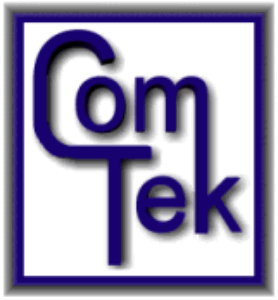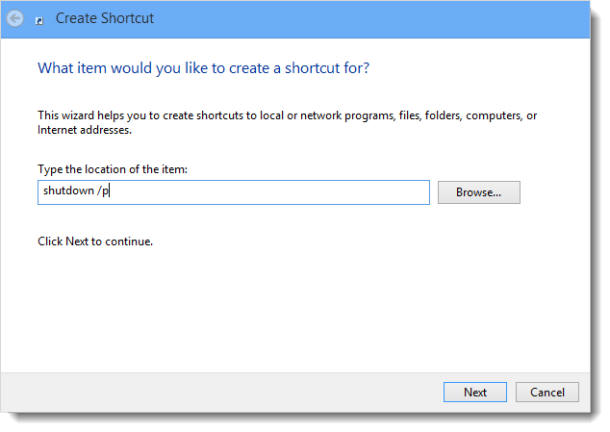

Windows 8 Tips & Tricks
The 5 most important Windows 8 keyboard shortcuts.
(Note: In case you're new to keyboard shortcuts, all of these
involve holding down the Windows key (it's to the left of the space
bar), then tapping the appropriate letter or function key.)
Windows-C Immediately brings up the Charms bar, for
quick access to things like Search, Share, and Settings.
Windows-D
Switches you to Desktop mode—a place I suspect many users will
prefer to hang out, at least initially. Once you're in that mode,
pressing Windows-D again toggles between minimize/restore all
windows, same as in Windows 7.
Windows-I
Brings up the Settings charm, where you'll find—among other
things—the Power icon for shutting down the PC.
Windows-PrtSc
This handy new feature instantly captures a screenshot and saves it
(in PNG format) to a Screenshots subfolder in your Pictures folder.
(For a complete list of Windows 8 Keyboard Shortcuts in a new Window, "Click Here")
Lock screen
Basic Navagation
Windows 8 launches with its new interface, all colourful tiles and touch-friendly apps. And if you're using a tablet then it'll all be very straightforward: just swipe left or right to scroll the screen, and tap any tile of interest. On a regular desktop, though, you might alternatively spin the mouse wheel to scroll backwards and forwards. And you can also use the keyboard. Press the Home or End keys to jump from one end of your Start screen to the other, for instance, then use the cursor keys to select a particular tile, tapping Enter to select it. Press the Windows key to return to the Start screen; right-click (or swipe down on) apps you don't need and select Unpin to remove them; and drag and drop the other tiles around to organize them as you like.
App groups
The Start screen apps are initially displayed in a fairly random order, but if you'd prefer a more organised life then it's easy to sort them into custom groups. You might drag People, Mail, Messaging and Calendar over to the left-hand side, for instance, to form a separate 'People' group. Click the 'minus' icon in the bottom right corner of the screen to zoom out and you'll now find you can drag and drop the new group (or any of the others) around as a block. Right-click within the block (while still zoomed out) and you'll also be able to give the group a name, which - if you go on to add another 20 or 30 apps to your Start screen - will make it much easier to find the tools you need.Quick access menu
Right-click in the bottom left corner (or hold down the Windows key and press X) for a text-based menu that provides easy access to lots of useful applets and features: Device Manager, Control Panel, Explorer, the Search dialog and more.
Find your applications The Win+X menu is useful, but no substitute for the old Start menu as it doesn't provide access to your applications. To find this, hold down the Windows key and press Q or either right-click an empty part of the Start screen or swipe your finger up from the bottom of the screen and select 'All Apps' to reveal a scrolling list of all your installed applications. Browse the various tiles to find what you need and click the relevant app to launch it.

Shutting down
(Easy way to shut down Windows 8 is just to push your power button)
To shut Windows 8 down, just move the mouse cursor to the bottom right corner of the screen, click the Settings icon - or just hold down the Windows key and press I - and you'll see a power button. Click this and choose 'Shut Down' or 'Restart'. Some of the tricks available in previous versions of Windows still apply. Press Ctrl+Alt+Del, for instance, click the power button in the bottom right-hand corner and you'll be presented with the same 'Shut Down' and 'Restart' options. And if you're on the desktop, press Alt+F4 and you'll be able to choose 'Shut Down', 'Restart', 'Sign Out' or 'Switch User' options.
The fastest option is to create a Shut Down shortcut and place it on your Desktop taskbar and Metro Start screen. Right click your Desktop, click New > Shortcut, and then type in: shutdown /p to shut down Windows 8 immediately or shutdown /r /t 0 to reboot Windows 8 . Click Next to continue.(Don’t include the period. That’s a zero, not the letter O.) Type a name for the shortcut, then click the Finish Button. If you want to change the Icon for the shortcut, right click on the shortcut and choose Properties, then click the Change Icon Button and choose a icon from the list. You can then right click the new shortcut and Pin to Start — then Pin to Taskbar or you can drag it onto your taskbar.

Closing an app
Windows 8 apps don't have close buttons, but this isn't the issue you might think. Apps are suspended when you switch to something else so they're only a very minimal drain on your system, and if you need the system resources then they'll automatically be shut down. (Their context will be saved, of course, so on relaunching they'll carry on where you left off.) If you want to close down an app anyway, though, move the mouse cursor up to the top of the screen. When it turns from the regular mouse pointer to the icon of a hand, hold down the left mouse button and drag it down the screen (or right click and select close). Your app should shrink to a thumbnail which you can drag off the screen to close it. If that's too much hassle, then simply pressing Alt+F4 still works. And when all else fails then press Ctrl+Shift+Esc to launch Task Manager, right-click something in the Apps list and select End Task. Beware, though, close something you shouldn't and it's easy to crash or lock up your PC.

